Cover
Copyright
About the Author
Table of Contents
Preface
1: Getting Started with WebRTC
Audio and video communication today
Enabling audio and video on the Web
Camera and microphone capture
Encoding and decoding audio and video
Transportation layer
Session management
Creating web standards
Browser support
Compatibility with Chrome, Firefox, and Opera
Compatibility with Android OS
Compatibilty with Apple
Compatibility with Internet Explorer
Using WebRTC in your browser
Applications enabled by WebRTC
Self-test questions
Summary
2: Getting the User's Media
Getting access to media devices
Setting up a static server
Creating our first MediaStream page
Constraining the media stream
Constraining the video capture
Handling multiple devices
Creating a photo booth application
Modifying the media stream
Self-test questions
Summary
3: Creating a Basic WebRTC Application
Understanding UDP transport and real-time transfer
The WebRTC API
The RTCPeerConnection object
Signaling and negotiation
Session Description Protocol
Finding a clear route to another user
Session Traversal Utilities for NAT
Traversal Using Relays around NAT
Interactive Connectivity Establishment
Building a basic WebRTC application
Creating a RTCPeerConnection
Creating the SDP offer and response answer
Finding ICE candidates
Adding streams and polishing
Running your first WebRTC application
Self-test questions
Summary
4: Creating a Signaling Server
Building a signaling server
Setting up our environment
Getting a connection
Testing our server
Identifying users
Initiating a call
Answering a call
Handling ICE candidates
Hanging up a call
Complete signaling server
Signaling in the real world
The woes of WebSockets
Connecting with other services
XMPP
Session Initiation Protocol
Self-test questions
Summary
5: Connecting Clients Together
The client application
Setting up the page
Getting a connection
Logging in to the application
Starting a peer connection
Initiating a call
Inspecting the traffic
Hanging up a call
A complete WebRTC client
Improving the application
Self-test questions
Summary
6: Sending Data with WebRTC
Stream Control Transmission Protocol and data transportation
The RTCDataChannel object
Data channel options
Sending data
Encryption and security
Adding text-based chat
Use cases
Self-test questions
Summary
7: File Sharing
Getting a file with the File API
Setting up our page
Getting a reference to a file
Breaking down a file into chunks
Making chunks readable
Reading and sending the file
Putting it together on the other side
Showing progress to the user
Self-test questions
Summary
8: Advanced Security and Large-scale Optimization
Securing the signaling server
Using encryption
Using an OAuth provider
Supporting mobile devices
Introduction to mesh networking
Types of network meshes
Everyone to everyone
Star network
Partial mesh
Limits of mesh networking
Video conferencing with more users
The future of conference calls
Self-test questions
Summary
Appendix: Answers to Self-test Questions
Chapter 1, Getting Started with WebRTC
Chapter 2, Getting the User's Media
Chapter 3, Creating a Basic WebRTC Application
Chapter 4, Creating a Signaling Server
Chapter 5, Connecting Clients Together
Chapter 6, Sending Data with WebRTC
Chapter 7, File Sharing
Chapter 8, Advanced Security and Large-scale Optimization
Index
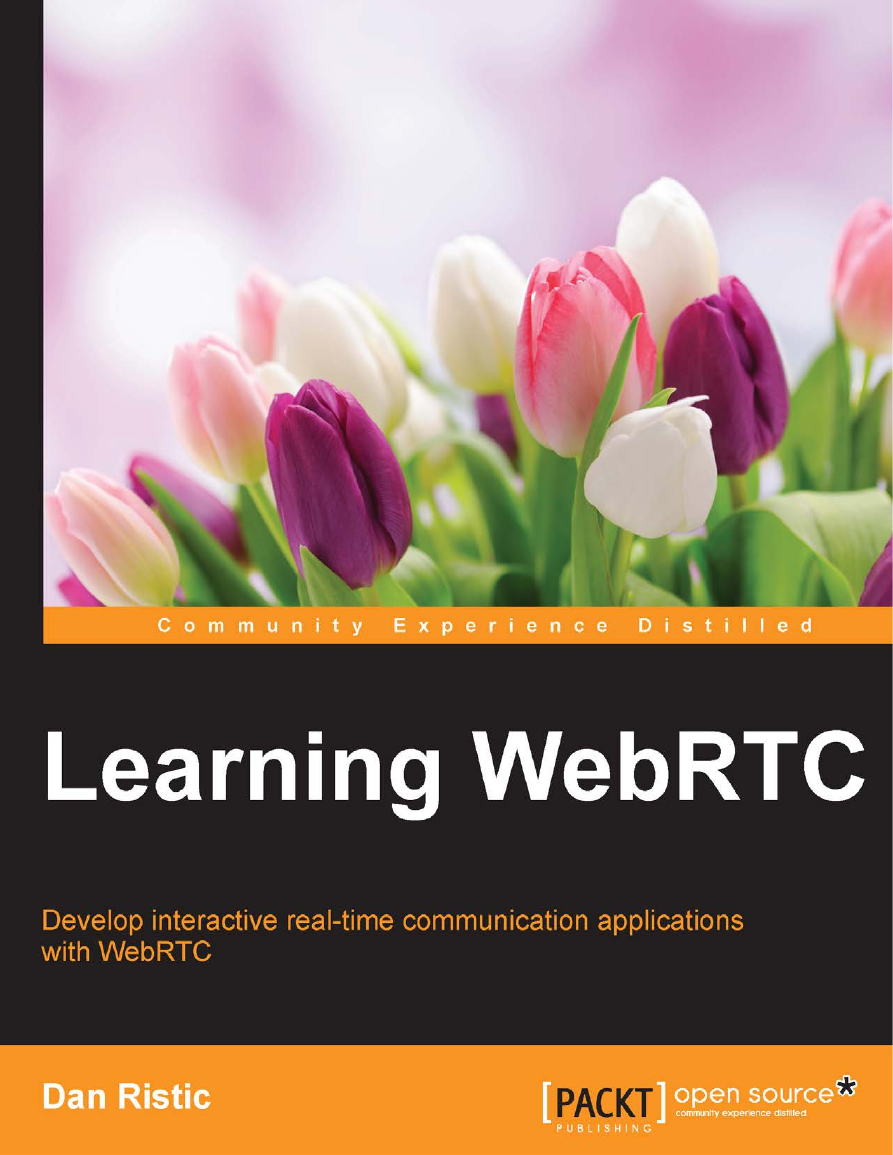
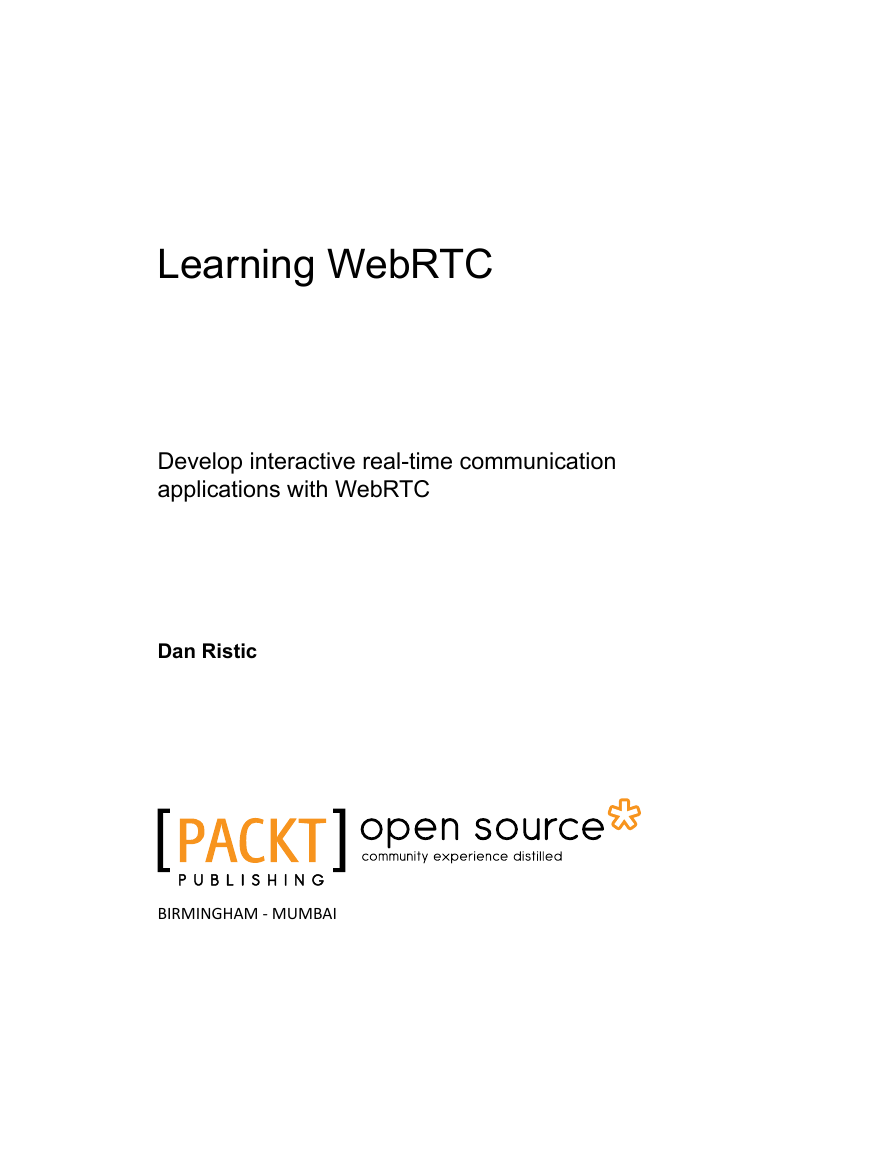



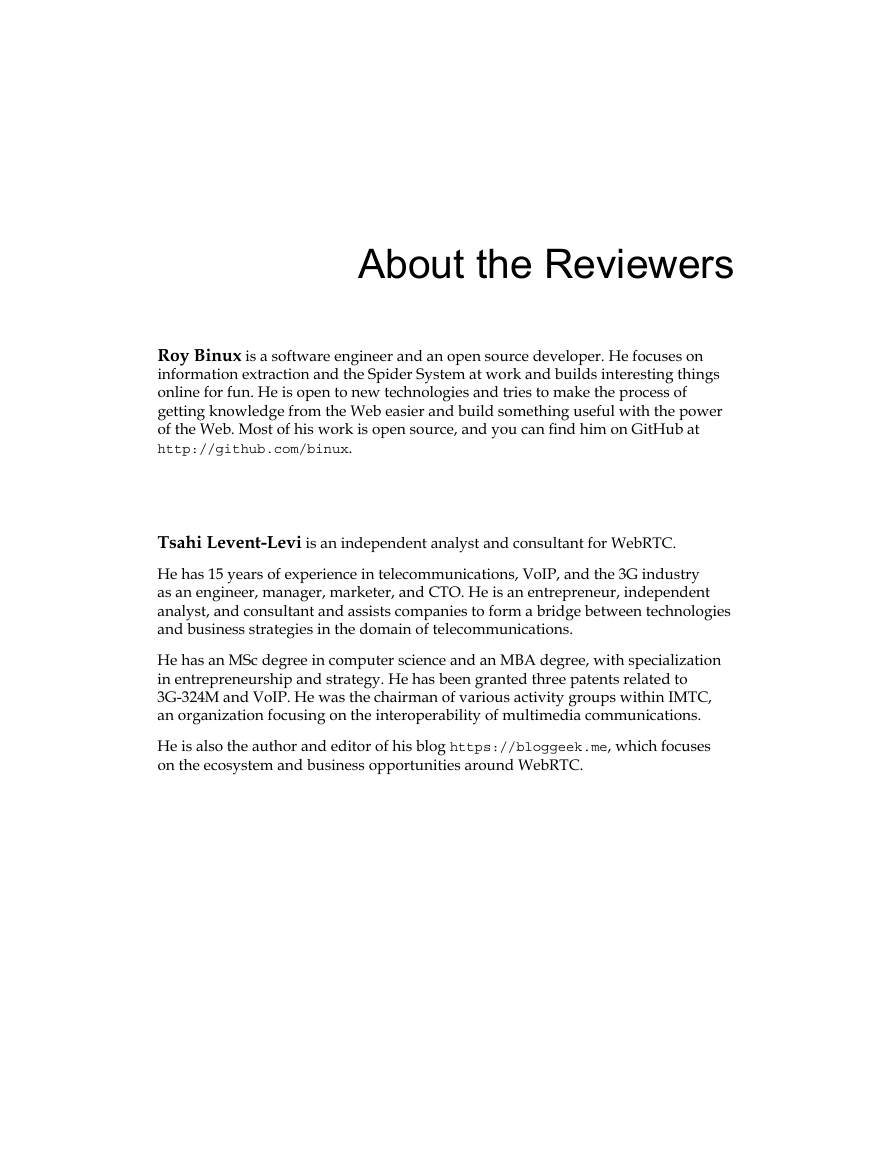
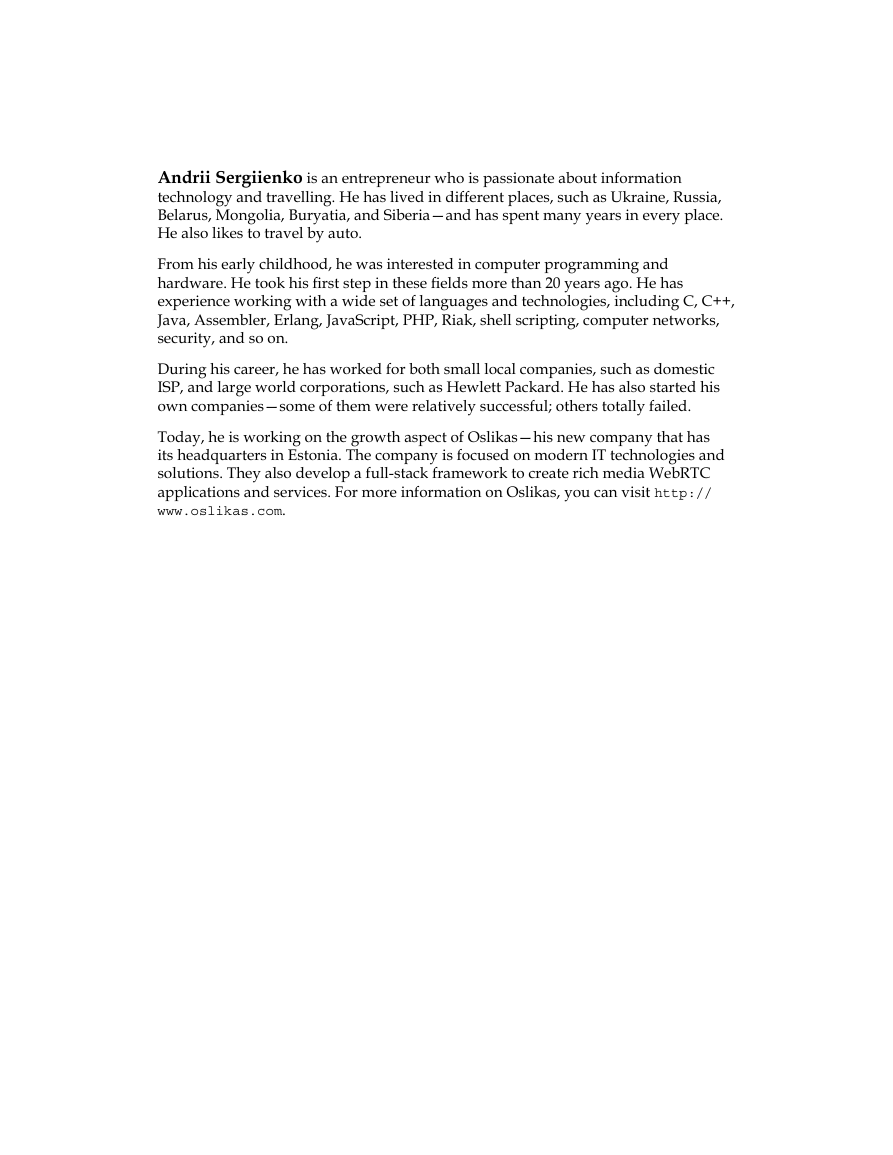
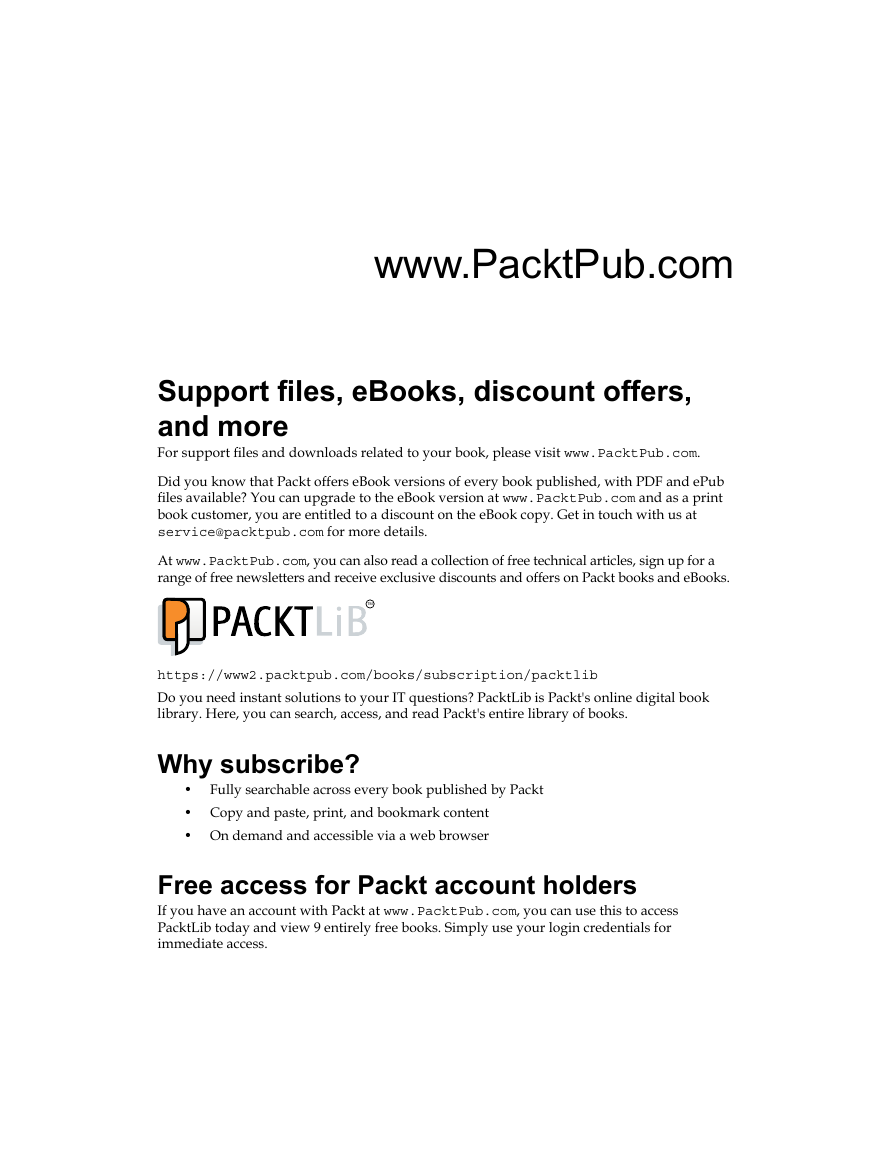








 2023年江西萍乡中考道德与法治真题及答案.doc
2023年江西萍乡中考道德与法治真题及答案.doc 2012年重庆南川中考生物真题及答案.doc
2012年重庆南川中考生物真题及答案.doc 2013年江西师范大学地理学综合及文艺理论基础考研真题.doc
2013年江西师范大学地理学综合及文艺理论基础考研真题.doc 2020年四川甘孜小升初语文真题及答案I卷.doc
2020年四川甘孜小升初语文真题及答案I卷.doc 2020年注册岩土工程师专业基础考试真题及答案.doc
2020年注册岩土工程师专业基础考试真题及答案.doc 2023-2024学年福建省厦门市九年级上学期数学月考试题及答案.doc
2023-2024学年福建省厦门市九年级上学期数学月考试题及答案.doc 2021-2022学年辽宁省沈阳市大东区九年级上学期语文期末试题及答案.doc
2021-2022学年辽宁省沈阳市大东区九年级上学期语文期末试题及答案.doc 2022-2023学年北京东城区初三第一学期物理期末试卷及答案.doc
2022-2023学年北京东城区初三第一学期物理期末试卷及答案.doc 2018上半年江西教师资格初中地理学科知识与教学能力真题及答案.doc
2018上半年江西教师资格初中地理学科知识与教学能力真题及答案.doc 2012年河北国家公务员申论考试真题及答案-省级.doc
2012年河北国家公务员申论考试真题及答案-省级.doc 2020-2021学年江苏省扬州市江都区邵樊片九年级上学期数学第一次质量检测试题及答案.doc
2020-2021学年江苏省扬州市江都区邵樊片九年级上学期数学第一次质量检测试题及答案.doc 2022下半年黑龙江教师资格证中学综合素质真题及答案.doc
2022下半年黑龙江教师资格证中学综合素质真题及答案.doc